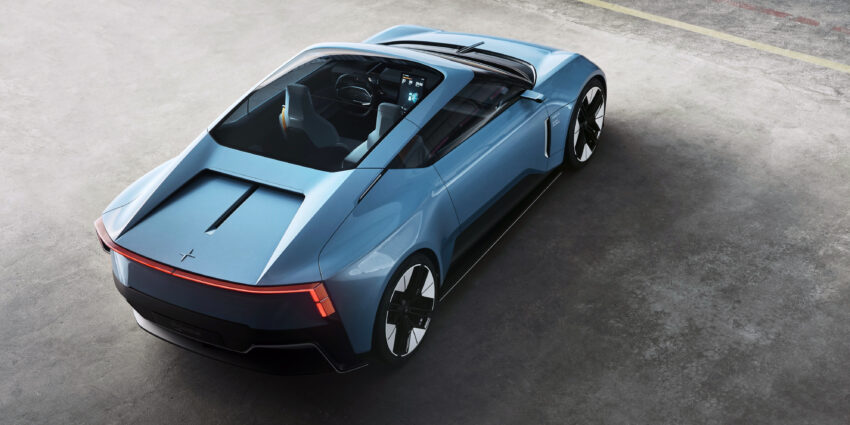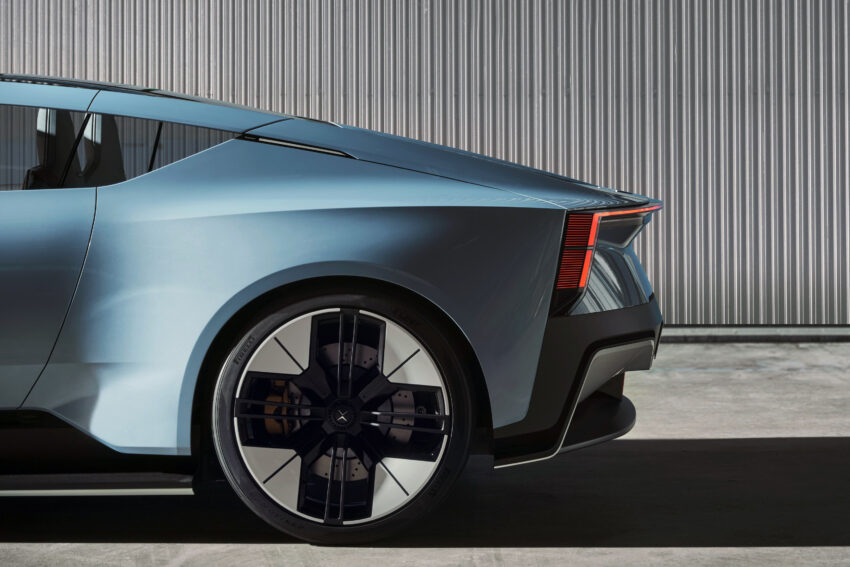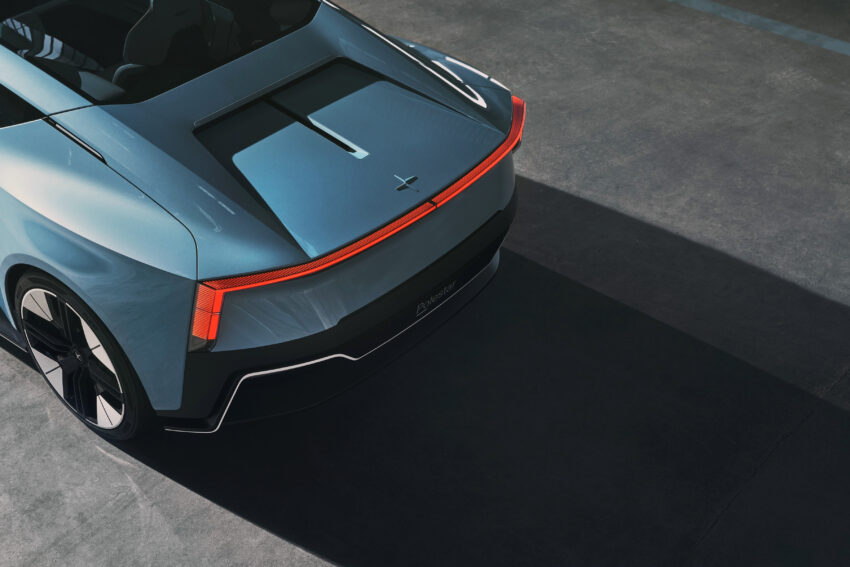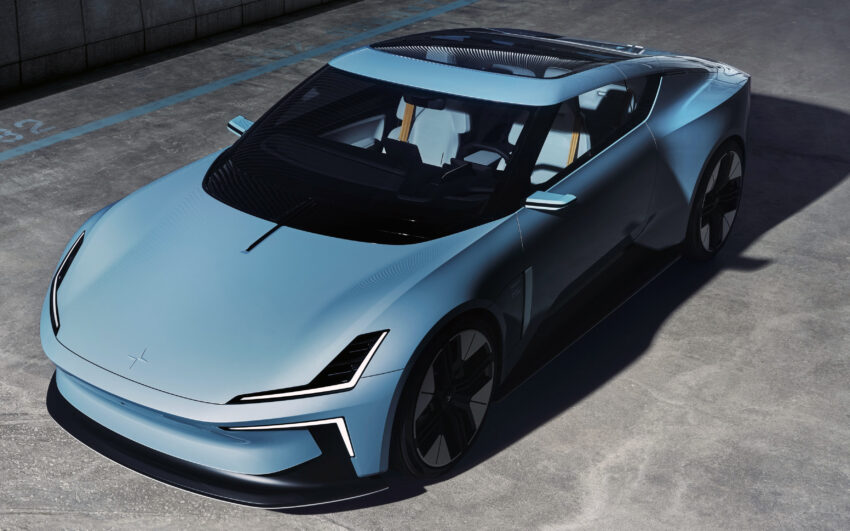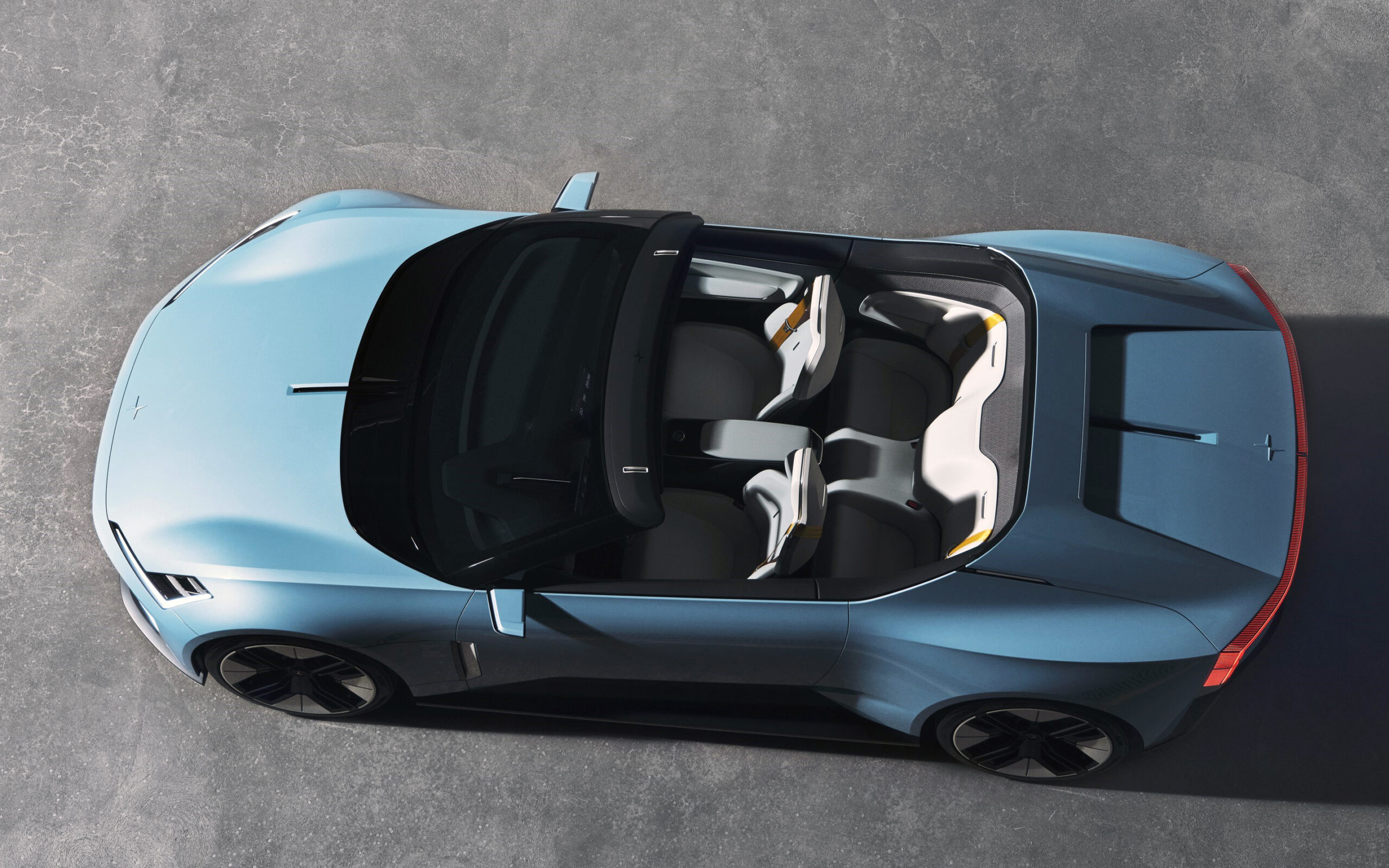
Polestar, the Swedish EV maker that’s helping expand the tech and engineering boundaries of what an EV can be, is also pretty good at designing them and has just dropped a gorgeous piece of eye candy with its O2 concept.
Based on the Precept GT sedan concept unveiled in 2020, it’s a 4-place hardtop convertible roadster. While it shares a lot of the Precept’s lines below the beltline, it sports a mostly glass fold-away roof. In profile, the O2 has a little bit of 2023 Nissan in its fastback roofline.
[A 4-min. read.]
At 109.4 inches, its wheelbase is 13 inches less than the Precept’s and slots in somewhere between compact and midsize. While the O2 is technically a four seater, only very short passengers – or folks with extremely bendy legs – would feel welcome in the rear seating area.
But then, most four-place performance cars share the same truncated backseat layout, and the curvy synthetic fabric covered buckets in the rear of the O2 would make a fancy resting place for the front seat occupants’ coats, briefcases and the like.
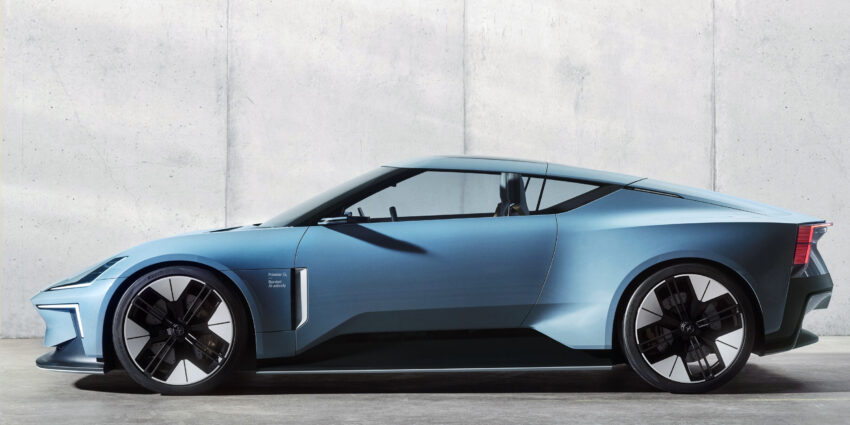
Together, the Precept and O2 concepts provide a look at Polestar’s design, technology and sustainability ambitions.
Indeed, some of the things explored in the two concepts will show up in Polestar’s next three production next three cars, Gregor Hembrough, head of Polestar USA, told TheGreenCarGuy.
The Precept, in fact, will be produced with little alteration as the Polestar 5, coming to showrooms in 2025 form a new factory the EV maker is building in China. (Polestar’s ownership is split evenly between Volvo and Volvo’s Chinese parent, Geely Holdings.)
What It’s All About
Hembrough wouldn’t say whether a convertible comes after the Polestar 5, only that the O2 was done to examine how the lightweight, super-strong bonded aluminum platform developed for the Precept/Polestar 5 could be “modulated” to host a variety of body types and sizes.
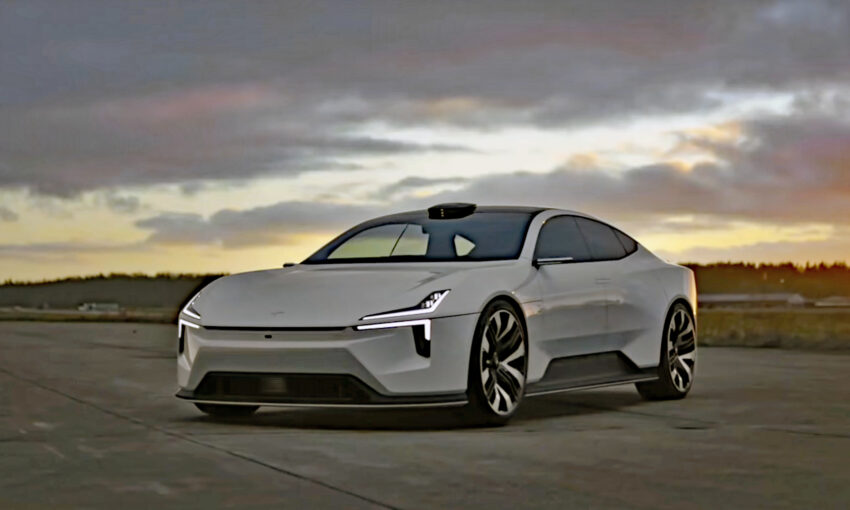
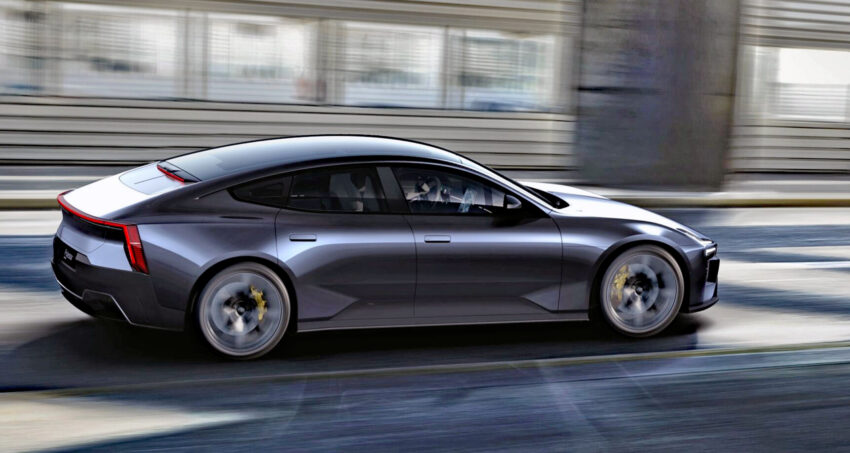
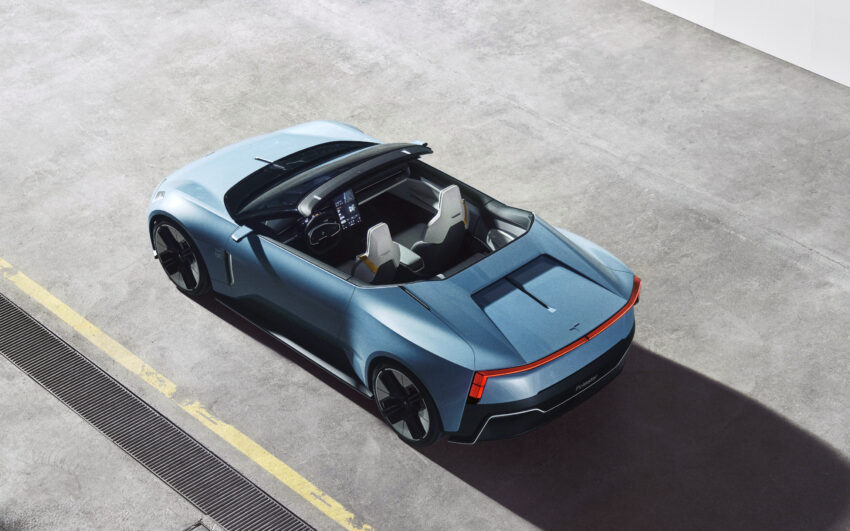
The convertible doesn’t use a lightweight canvas lid, however. Designers opted for a more complex fold-away glass-and-aluminum roof despite the unwelcome heavier weight. Hembrough said the trade-off is that it provides for a much snugger cabin than would a real ragtop – critical in cold Swedish winters.
Polestar also uses the concept to experiment with aerodynamics and recycled materials.
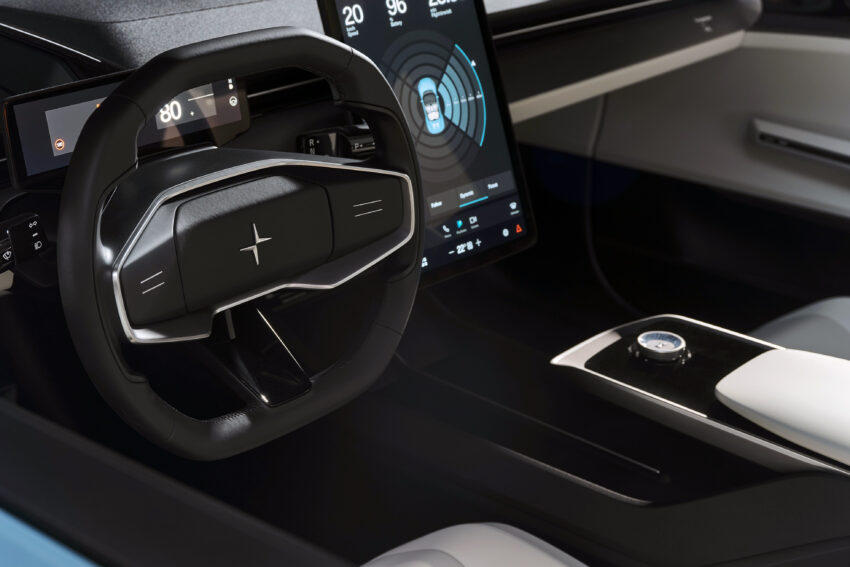
To reduce manufacturing complexity, the company has developed a new “mono-material” made from recycled polyester and uses it for all of the interior soft components: Foam, adhesives, laminates and knit fibers for the upholstery. Using a single material for all of those items helps reduce weight, simplifies end-of-life recycling and cuts waste.
The different grades of structural aluminum used in the platform and body structure wear labels to help ensure they are recycled properly. Mixing various grades in the recycling bin because there’s no way to tell which is what would diminish the structural properties of the aluminum made from the recycled bits.
Selfies on the Move
Polestar is serious about EVs, but designers decided to have a giggle or two with the O2 and added a magnetic strip on the rear deck lid that, they said, would carry an integrated drone that’s capable of taking off and landing while the car is in motion
It could be launched from the driver’s seat and would land autonomously and dock itself on the deck lid once its mission – to shoot “selfie” video clips of the car while it is moving at speeds of up to 56 mph – was completed.
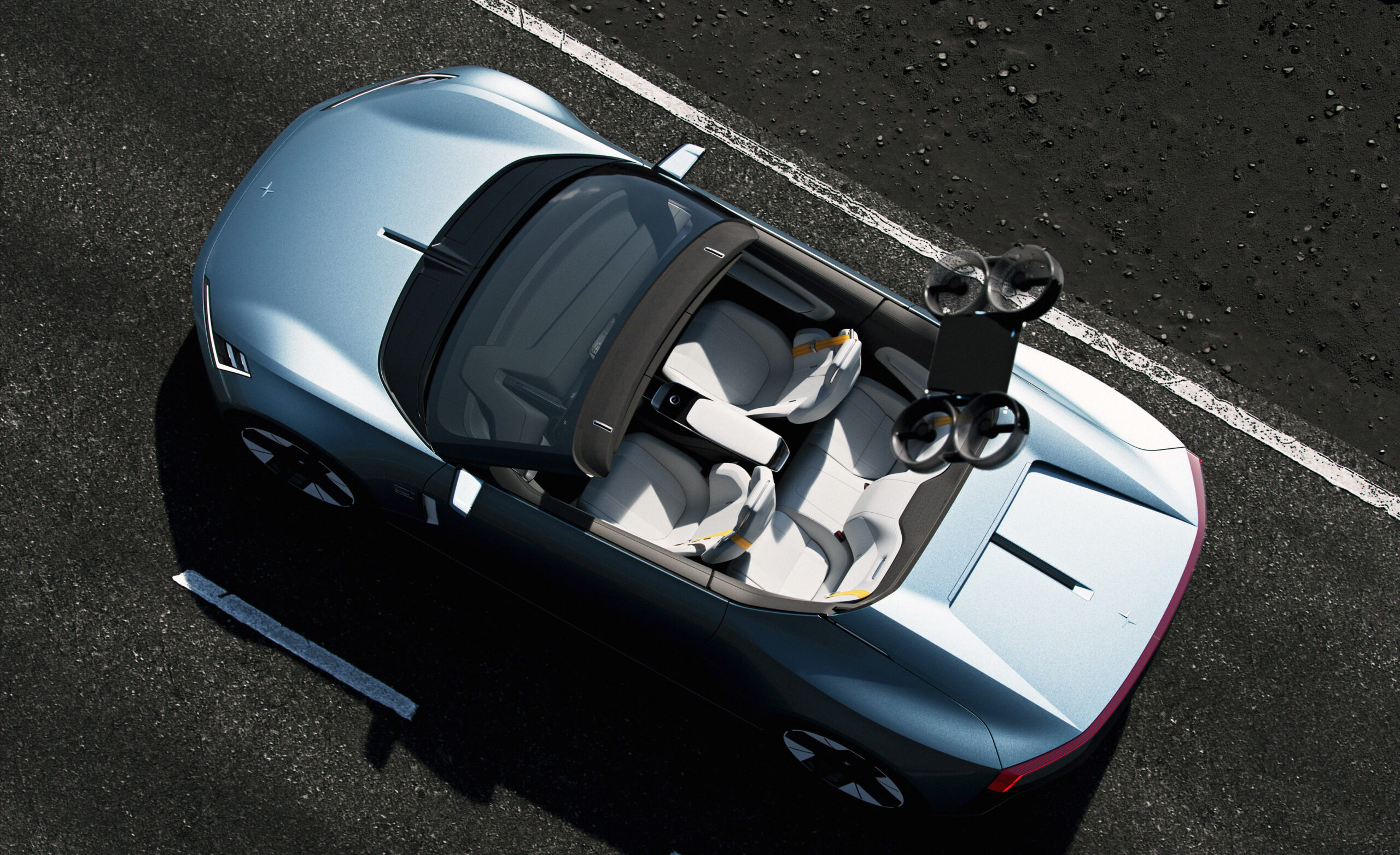
The clips could be edited, viewed, and posted on the concept’s Google-based 15-inch infotainment touchscreen – which is a real production piece, not a concept – as soon as the car is parked.
The drone-as-an-accessory wouldn’t be a feature of any production model, though. Too many safety and drone operations rules stand in the way. It was simply done “to emphasize the experiences you can have with a car like the Polestar O2 in new and unusual ways,” said Maximilian Missoni, Polestar’s design director.
Up Next…
Before deciding whether a convertible is right for its lineup, Polestar has another year of market-building with a single production model, the Polestar 2 hatchback sport sedan.
The company will begin building its next vehicle, the Polestar 3 crossover SUV late this year at the South Carolina plant it will share with Volvo. The “3” goes on sale sometime in early 2023. The Polestar 4, a smaller crossover SUV, comes sometime in 2024 and the Polestar 5 GT will hit the market in 2025.
Beyond 2025, plans for new models and for production timing are still in the works and very flexible, Hembrough said. Polestar plans to go public this year and the cash from a successful stock offering could allow it to move with more speed.
